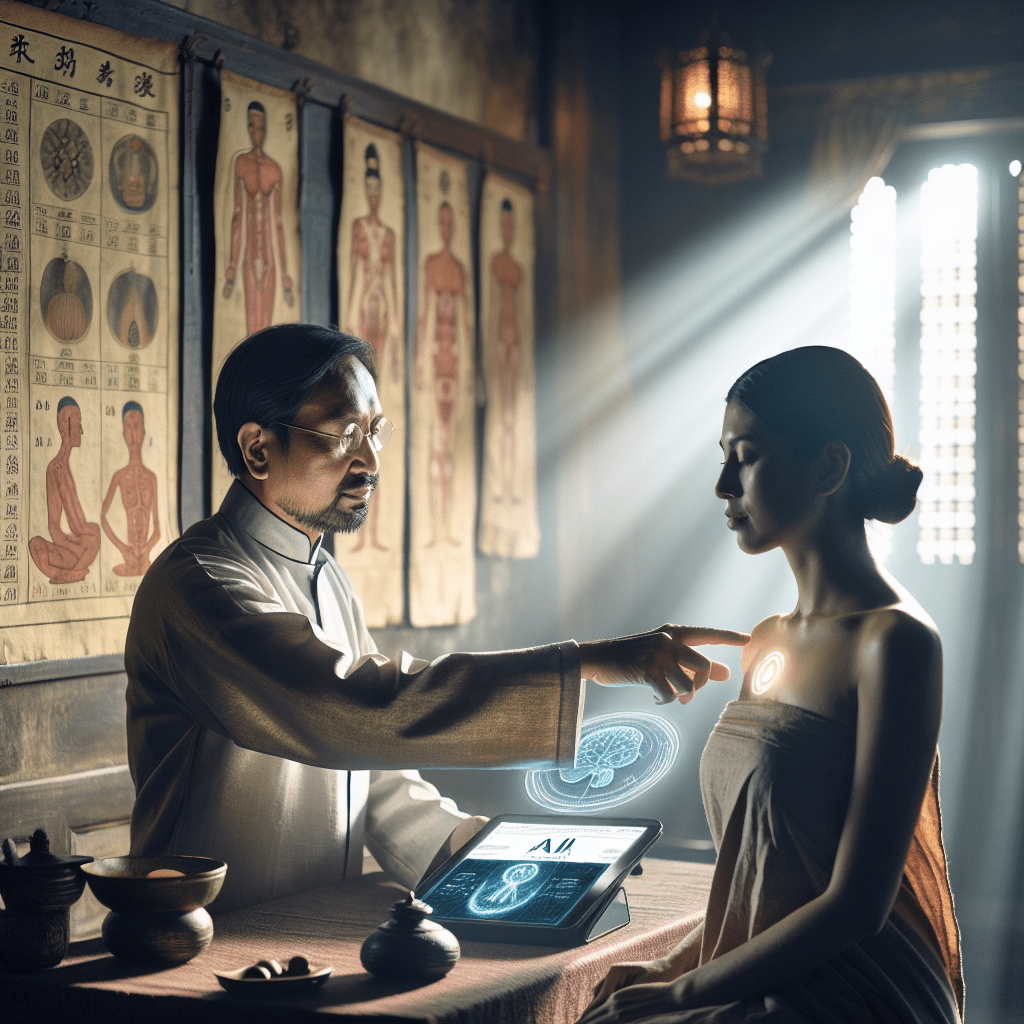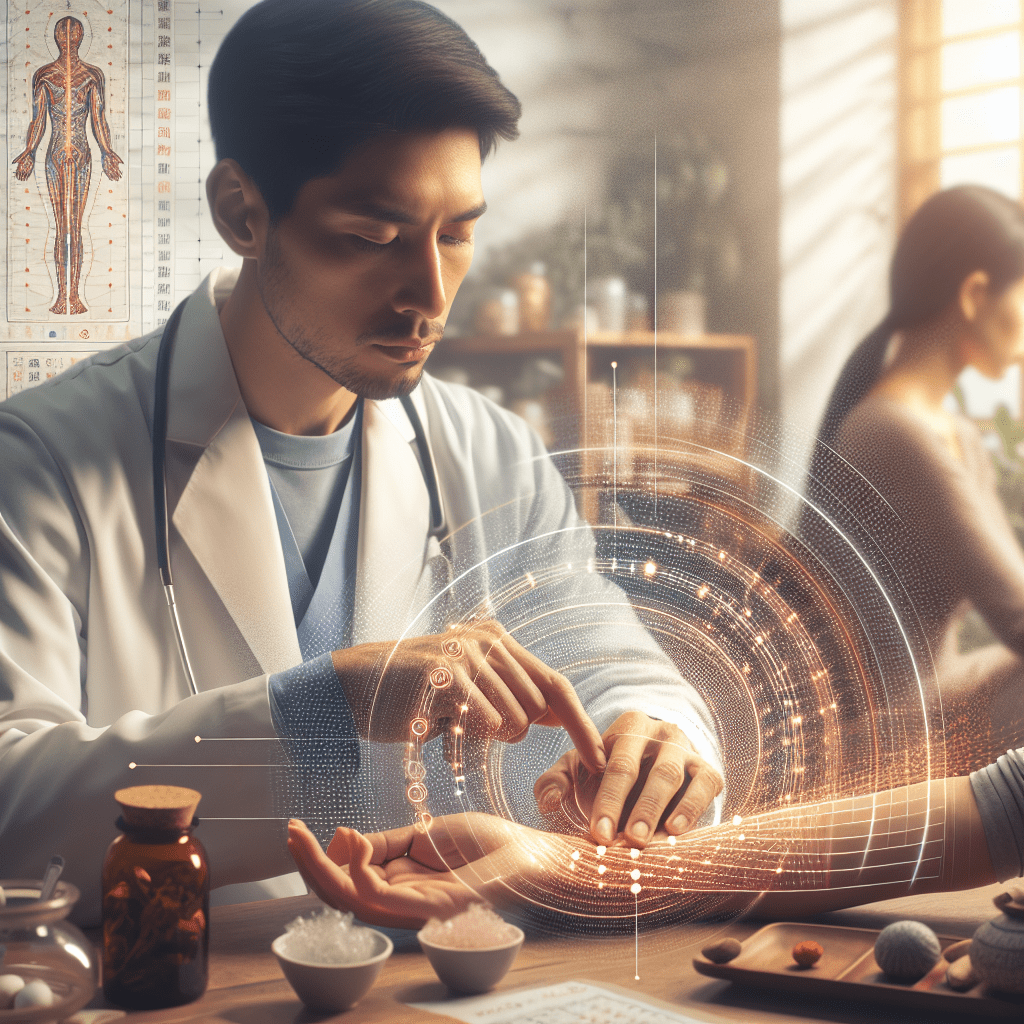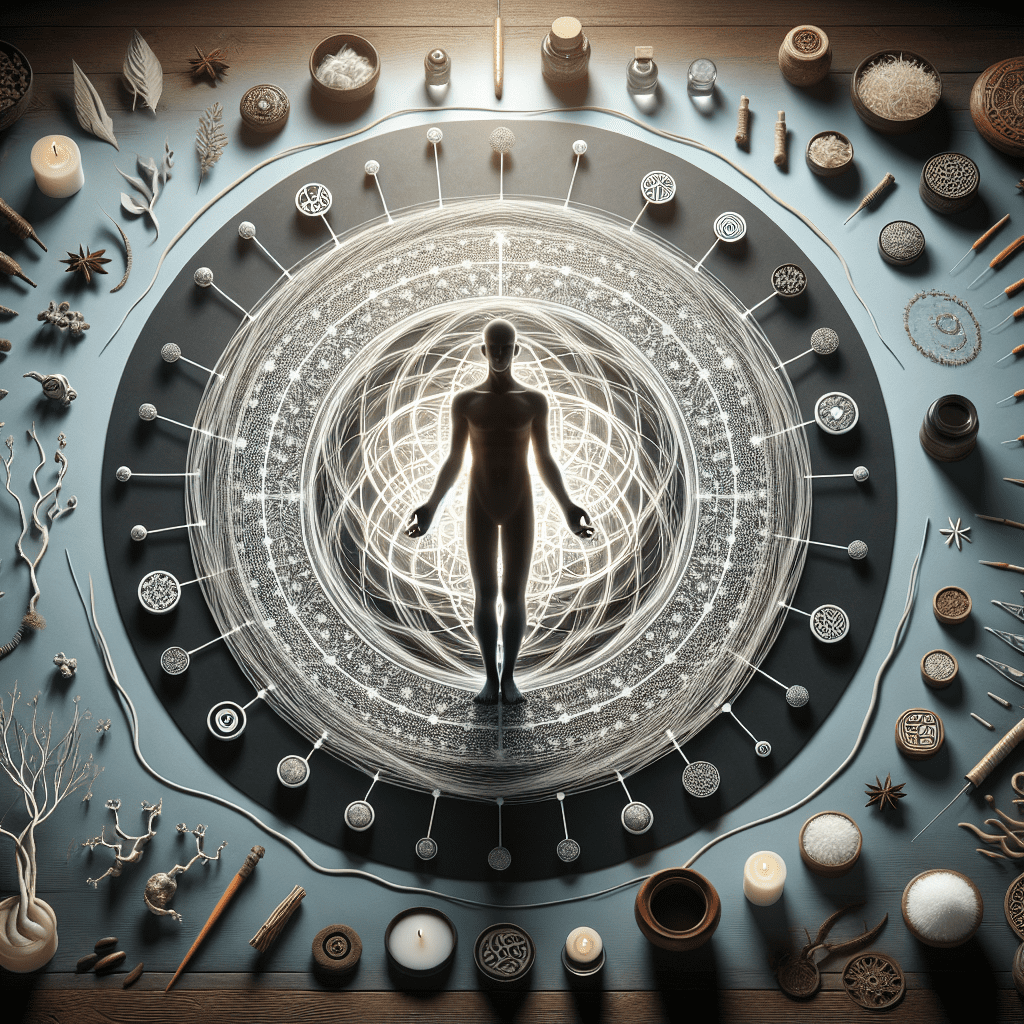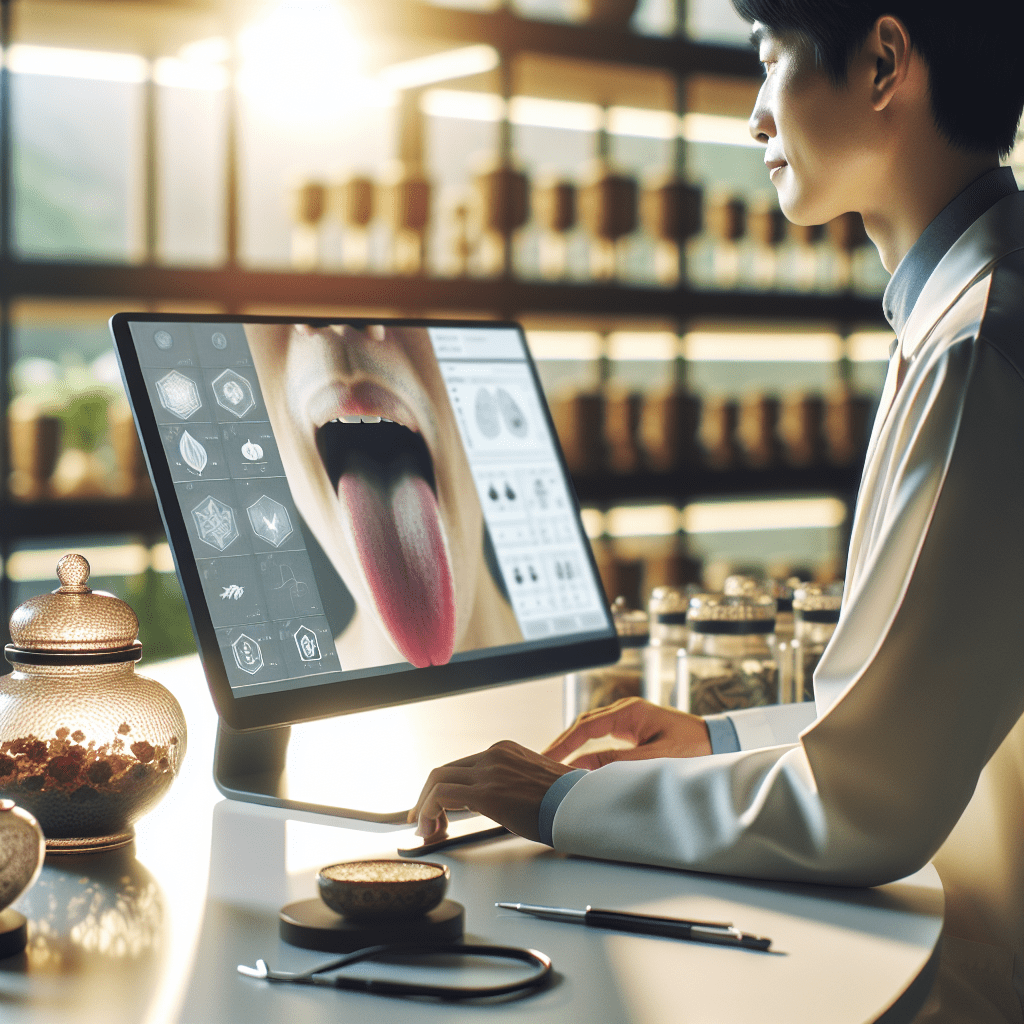Have you ever wondered what your pulse could reveal about your health if interpreted by both an ancient healer and artificial intelligence? As we navigate the exciting intersection of time-honored healing traditions and cutting-edge technology, a fascinating revolution is taking place in health diagnostics. The marriage of Eastern medical wisdom—developed over thousands of years—with sophisticated AI algorithms is creating new possibilities for understanding our bodies that neither approach could achieve alone.
When you place your fingers on your wrist to feel your pulse, you’re engaging in a practice that dates back millennia. But today, that same pulse could be analyzed by powerful AI systems capable of detecting patterns invisible to even the most experienced human practitioners. This fusion of ancient wisdom and modern innovation raises an intriguing question: just how smart could your pulse readings become with AI health diagnostics?
The Ancient Art of Eastern Diagnostics
Traditional Eastern medicine has always viewed health through a holistic lens, seeing the body not as isolated systems but as an interconnected whole where body, mind, and spirit function in harmony. Unlike Western medicine’s focus on treating specific symptoms, Eastern approaches seek to understand the underlying patterns of disharmony that manifest as illness—a principle central to Yin-Yang balance that modern medicine is finally beginning to embrace.
At the heart of traditional diagnostic methods are techniques like pulse diagnosis (known as “Nadi Pariksha” in Ayurveda or “Mai Zhen” in Traditional Chinese Medicine) and tongue observation. In pulse diagnosis, practitioners assess not just the rate but also the quality, rhythm, strength, and other subtle characteristics across different positions on the wrist. Each position corresponds to different organs and energy systems within the body.
“The pulse is like nature’s hidden code to your health,” explains Dr. Li Chen, a TCM practitioner with over 30 years of experience. “An experienced doctor can detect imbalances months before they manifest as physical symptoms.”
The challenge, however, has always been the inherent variability of these methods. Even with years of training, diagnoses can vary between practitioners based on their experience, intuition, and personal interpretation. This inconsistency, while not diminishing the value of these ancient practices, has been one of the biggest hurdles to their wider acceptance in modern healthcare settings.
AI-Powered Enhancement of Traditional Diagnostics
Enter artificial intelligence—the game-changer that’s breathing new life into these ancient diagnostic methods. AI health diagnostics systems are now being developed to analyze the same pulse patterns that traditional practitioners have studied for centuries, but with unprecedented precision and consistency.
Using sophisticated sensors and machine learning algorithms, AI-enhanced tools can capture subtle variations in pulse waves that might escape even trained human fingers. These systems learn from vast datasets of pulse readings, correlating patterns with specific health conditions and constitutional types according to Eastern medical theories.
For instance, researchers have developed AI models that can identify different pulse types described in Eastern medicine with remarkable accuracy. By analyzing thousands of pulse readings from patients with known conditions, these systems have learned to recognize the distinctive patterns associated with various imbalances.
“What makes AI so powerful in this context is its ability to process complex data without fatigue or bias,” notes Dr. Sarah Kim, a researcher specializing in AI health diagnostics. “The algorithms can detect minute correlations across thousands of variables—something even the most experienced human practitioner couldn’t achieve.”
Beyond pulse diagnosis, AI is also enhancing other traditional diagnostic methods. Computer vision systems can now analyze tongue images for color, coating, shape, and moisture levels—all important indicators in Eastern medicine. These systems provide objective measurements that complement the subjective assessments of human practitioners, as explored in research on how Digital TCM can detect what human eyes miss in tongue diagnosis.
Comparing Accuracy: Traditional vs. AI-Enhanced Techniques
How does the accuracy of AI-enhanced diagnostics compare to traditional methods alone? The results from recent studies are impressive. A 2022 research project comparing AI pulse diagnosis with assessments from experienced TCM doctors found that the AI system achieved a diagnostic accuracy of over 90% for certain conditions, while human practitioners averaged around 80%.
However, this doesn’t mean AI is ready to replace human expertise. The most promising approach appears to be a collaborative one, where AI tools provide objective data that human practitioners then interpret based on their clinical experience and holistic understanding of the patient.
“The best results come from combining AI’s analytical power with the practitioner’s intuitive wisdom,” explains Dr. Wang Liu, who has integrated AI diagnostics into his traditional medicine practice. “The AI helps standardize the assessment process, while the practitioner provides the contextual understanding that algorithms alone cannot achieve.”
In one particularly striking example, a clinical trial involving 500 patients with various cardiovascular conditions found that when TCM doctors used AI-enhanced pulse diagnosis tools, their diagnostic accuracy improved by nearly 15% compared to traditional methods alone. This suggests that AI can serve as a powerful complementary tool that enhances rather than replaces traditional diagnostic expertise, as demonstrated in case studies where Digital TCM approaches successfully managed various health conditions.
Benefits of AI Integration with Traditional Medicine
The integration of AI with Traditional Complementary and Integrative Medicine (TCIM) offers several compelling benefits that are transforming patient care, representing a revolutionary fusion of ancient healing wisdom and modern technology.
First, AI health diagnostics significantly speed up the diagnostic process. What might take a human practitioner years to learn through experience, AI can absorb through analysis of thousands of cases in a fraction of the time. This means patients can receive assessments more quickly, leading to faster intervention.
Second, AI excels at identifying complex patterns that might be difficult for humans to detect. By analyzing multiple variables simultaneously, AI systems can spot subtle correlations between different health indicators, potentially revealing new insights about how various symptoms and conditions are interconnected.
“One of the most exciting aspects is how AI can help us refine treatment plans,” says Dr. Emma Chen, founder of an integrative medicine clinic. “By tracking patient responses to various interventions, the algorithms learn which approaches work best for specific constitutional types and conditions.”
Third, AI brings a level of standardization to Eastern diagnostic methods that has been historically challenging to achieve. This standardization makes these ancient healing approaches more accessible to modern healthcare systems, potentially bridging the gap between Eastern and Western medical paradigms.
For patients, this integration means receiving the best of both worlds: the personalized, holistic approach of Eastern medicine enhanced by the precision and consistency of AI-powered analysis. As one patient described it, “It’s like having an ancient healer with superhuman abilities looking after your health.“
Future Implications and Ongoing Development
The field of AI health diagnostics in traditional medicine continues to evolve rapidly. Researchers are now working on more sophisticated sensors that can capture even subtler aspects of the pulse, while more advanced algorithms are being developed to interpret increasingly complex patterns.
One particularly promising direction is the development of wearable devices that can continuously monitor pulse patterns throughout the day, providing a more comprehensive picture than the point-in-time readings currently used in both traditional and AI-enhanced diagnostics. These advances align with research published in Nature Digital Medicine showing how AI and mobile health technologies can transform traditional medicine practices.
“The future likely involves personal health assistants that combine the wisdom of Eastern medicine with AI capabilities,” predicts Dr. Jason Wong, a digital health innovator. “Imagine receiving daily insights about your constitutional balance and personalized recommendations for diet, exercise, and lifestyle based on continuous pulse monitoring.”
As with any emerging technology, challenges remain. Ensuring that AI systems are trained on diverse populations to avoid bias, maintaining patient privacy, and validating diagnostic accuracy across different health conditions are all active areas of research.
However, the potential benefits are too significant to ignore. By optimizing the integration of ancient wisdom with cutting-edge technology, we’re moving toward a future where healthcare can be more personalized, preventative, and holistic than ever before.
Finding Balance in the Blend of Old and New
The journey of combining ancient Eastern medical philosophies with AI represents an exciting evolution in healthcare—not a replacement of traditional wisdom, but rather its enhancement through modern innovation.
At HerbalsZen, we believe this balance between honoring time-tested healing traditions while embracing technological advancement is the key to holistic wellness solutions that address the complexity of human health. The integration of Eastern medicine’s holistic approach with AI’s analytical capabilities creates a powerful synergy that can provide deeper insights into our well-being than either approach could offer alone.
As AI health diagnostics continues to develop, we’re witnessing a beautiful harmony forming between ancient wisdom and modern technology. Your pulse readings today might be smarter than ever before—interpreted not just by human touch but enhanced by artificial intelligence that can detect patterns across thousands of similar readings.
This convergence represents not just a technological advancement but a philosophical one as well—a recognition that the future of healthcare might lie not in choosing between traditional and modern approaches, but in thoughtfully integrating the best aspects of both. By combining the holistic wisdom of the East with the analytical precision of AI, we’re opening new frontiers in understanding and supporting human health in all its complexity.
So the next time you feel your pulse, remember: you’re touching a connection point between ancient healing traditions and the cutting-edge future of healthcare. And that connection is becoming smarter every day.




